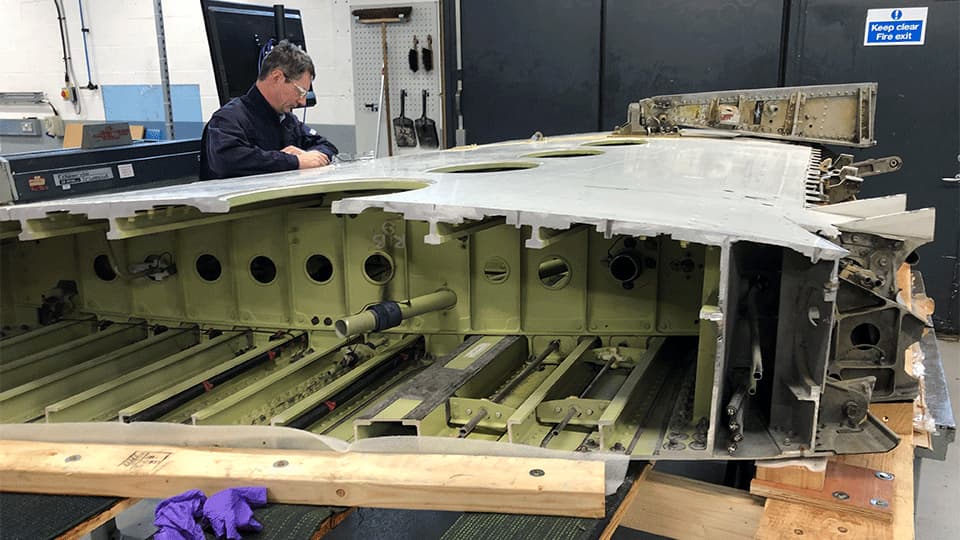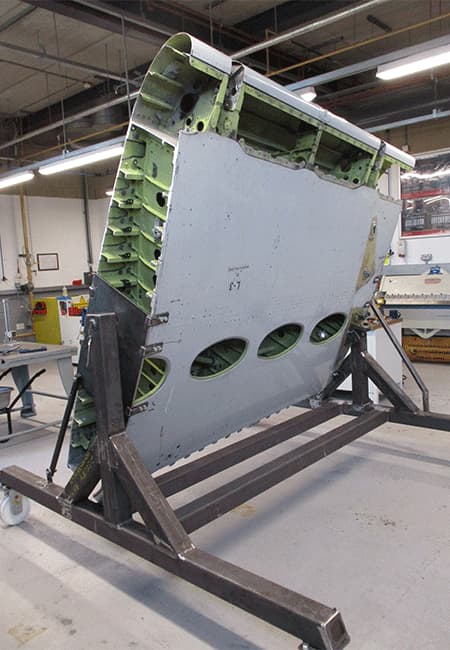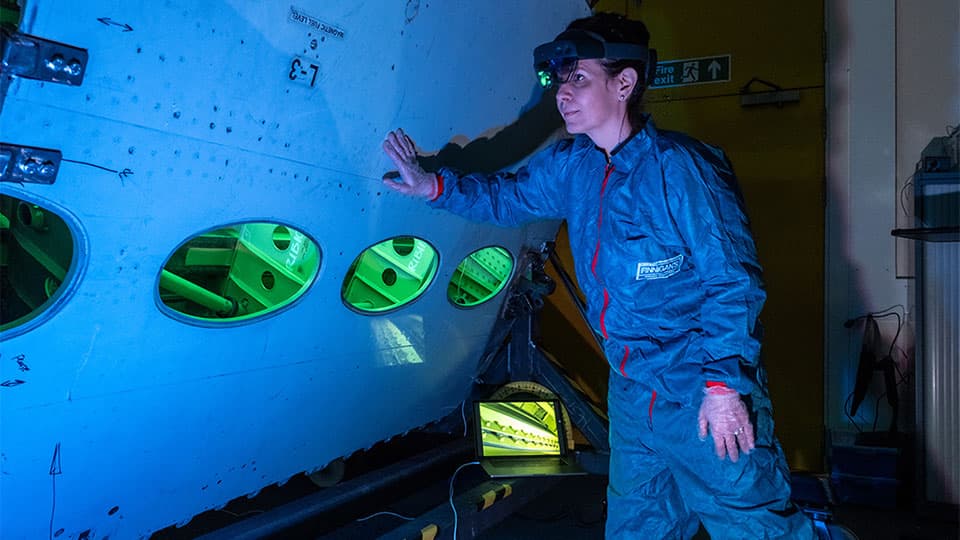Harnessing AI to Detect Anomalies during Aircraft Wing Manufacture and In Service Operation

Human based quality inspection is essential at every stage and involves critical measurement and testing to ensure every single component is within specification and is assembled correctly. The sheer number and scale of quality inspections cannot be underestimated – any failings could be catastrophic.
Manufacturing aircraft wings is extremely complex when considering the role of the wing in providing aerodynamic lift for the aircraft, mounting points for powerful jet engines, support for landing gear and storage for aviation fuel.
During operation, the wing must withstand significant temperature ranges (from -50 to 40 degrees Celsius) at the same time flexing during air turbulence. This makes the wing arguably the most complex and crucial component of any aircraft.
The manufacturing process involves many operations comprising different materials, material treatments and assembly of many thousands of components such as wing overs, ribs, spars, fasters, rivets and brackets.
Technical challenge

Detecting manufacturing issues involves many different requirements to ensure every single manufacturing step is performed according to rigorous tolerances. Unlike other manufacturing sectors the manufacturing processes and quality testing is so stringent that few if any manufacturing defects arise. Nevertheless, the inspection methods cannot be relaxed.
Quality inspection must be performed on the aircraft during its operational life - looking for damage to surfaces or other defects that might occur due to the stresses and strains experienced during operation. Consequently, at periodic intervals, a full internal and external inspection of the wing structure is undertaken by people. This is extremely time consuming and requires full personal protective equipment.
Even the usual inspection process could lead to potential foreign object debris such as ear plugs or personal protection equipment being left behind. Whilst this is extremely unlikely it still could happen. To put this into important context Boeing Aircraft have had recent issues reported widely with their quality inspection techniques.
Technical approach
The AVRRC are developing new AI based solutions to identify potential manufacturing issues to the same level, if not better-quality standard of inspection than is currently employed. The precise research being undertaken is commercially sensitive. However, important new AI techniques have been developed that has led to a significant improvement in the accuracy/reliability of defect detection. The goal is to argument rather than replace human inspection methods.
AI techniques require significant training data sets involving real examples of defects or objects of interest. Unfortunately, with regard to aircraft wing manufacture, very few if any defects arise due to the high level of continuous quality inspection undertaken. This means there is very little real training data available to provide a representative training data set. The AVRRC has investigated using synthetically generated defect training data that mimics potential issues with the manufacturing process.
Various machine learning techniques have been combined to trigger on various predefined anomalies. This has necessitated novel AI training techniques being used to create equivalent defect anomalies – effectively eliminating the need for a massive data set comprising hundreds of thousands of real defect anomalies. A dedicated Nvidia AI supercomputer has been used to perform the training.

Research results
Whilst the results of this research are commercially sensitive it has demonstrated the efficiency and effectiveness of the combination of AI techniques to detect a wide range of anomalies during the manufacturing process and in-service operation. The approach has the potential for significant cost savings in terms of manufacturing rate and time to undertake a detailed inspection.
A series of algorithms have been developed that harness the capability of multi-spectral sensors in conjunction with traditional and AI based imaging techniques.